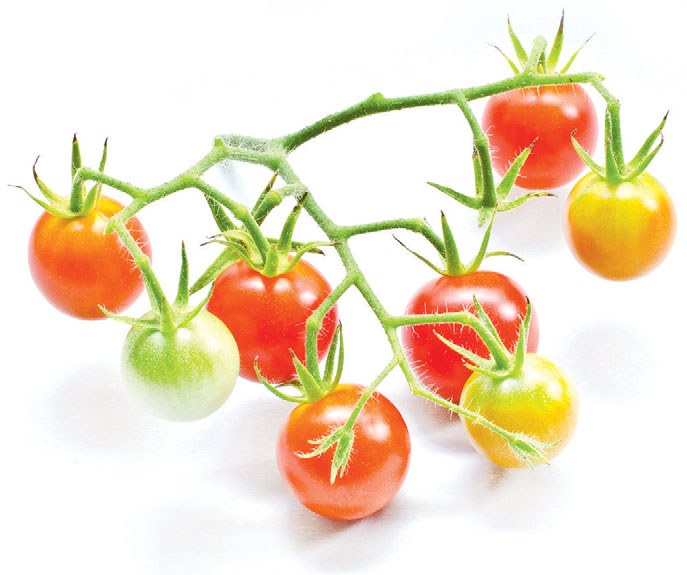Spotlight on Tomatoes
As confusing as it is to many, I’ve never really been a big fan of the summer. Between my Germanic heritage and Midwestern upbringing, the crisp coolness of fall and winter seem to better suit both my internal thermostat and overall disposition. As content and comfortable as I am bundled up and gorging myself on a variety of roasted or mashed starchy winter veggies, I inevitably break at some point and begin longing for summer to invade, if for nothing more than the simple perfection of a fresh Heirloom tomato slice with just a sprinkle of salt and pepper.
Of course, in theory I could always acquire a tomato during my favorite months of the year, but it would be nothing more than a depressing reminder that not all produce is created equal. The disappointment of biting into a sandwich to discover a mealy, flaccid, and flavorless slice of nothing is a true bummer, and the ranks of people who don’t fancy tomatoes are undeniably filled with anecdotes of these lackluster experiences. A locally grown, perfectly ripe tomato in June is a culinary blessing — a revelation even! One that’s mass produced, picked before its ripe, and shipped hundreds or even thousands of miles away in January, is barely a consolation prize, adding little to nothing to your meal.
Originating in Central and South America, tomatoes, perhaps more than any other single ingredient, have made their way across the world and supplemented, strengthened, and shaped the dietary traditions of cultures far and wide. From North America to North Africa, Italy to Vietnam, and seemingly everywhere in-between, the humble tomato plays both the star and supportive role in some of the world’s best loved and most delicious dishes. In the myriad of human differences, this prolific fruit is a constant similarity — a common thread of the culinary world and a point of reference we seemingly all can relate to and understand.
Originally avoided and thought to be poisonous by many cultures due to its lineage within the Solanaceae (or Nightshade) family, it was often grown as merely an ornamental addition to flower gardens in Europe. The Latin name Lycopersicon (or ‘Wolf Peach”), perfectly embodies the rampant fear of this now seemingly innocuous ingredient. In America, this myth persisted as late as the 1820’s even though by that time it had become a dietary staple throughout much of the rest of the world. Thankfully, this incorrect assumption faded, as the simple tomato, in addition to being versatile and delicious, is a true nutritional powerhouse. A naturally low-calorie food, the tomato is a superb source of vitamin c, biotin, vitamin k, vitamin b6, pantothenic acid, niacin, folic acid, and dietary fiber. Probably best known as a great source for the carotene lycopene, which has been repeatedly shown to protect against breast, colon, lung, skin, and prostate cancer, tomatoes have the unique trait of becoming even more nutritious when cooked. Lycopene releases from the plants cells when gently cooked or juiced, and increases the regenerative carotene at a rate of approximately five times the value of its raw counterparts. The riper the tomato, the higher the nutritional value as well. Avoid bruised, squishy, hard, or puffy fruit for maximum taste and benefit. Cold greatly inhibits the ripening process, so resist the urge to store in your refrigerator. Keep them at room temperature and avoid direct sunlight for maximum enjoyment.
Easy to grow and even easier to get ahold of, this plant produces and reproduces at a staggering rate; so much so that the results often overwhelm the needs of the producer. Fried green tomatoes, a classic Southern way of dealing with the overabundance of the yearly crop, gets a little twist here with the addition of Indian spices and flavors. Reimagined as a pakora, this simple preparation is wonderful with chutney, makes a lovely entrée with a soup or salad, or is perfect served alone as a unique side dish. Any excess batter can be used on onions, jalapenos, or any other veggies of your choosing.






